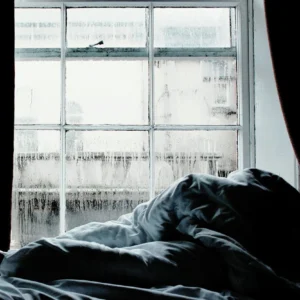

The bed bug lifecycle determines the most appropriate and effective treatment methods and the duration and frequency of treatments required to eliminate the infestation.
Bed bugs have become an increasingly common problem in homes, hotels, and other living spaces across the globe. These tiny, blood-sucking insects can cause significant discomfort to those affected by their presence. Understanding the lifecycle of these pests is crucial to effectively treat a bed bug infestation. The bed bug lifecycle determines the most appropriate and effective treatment methods and the duration and frequency of treatments required to eliminate the infestation.
Understanding the bed bug lifecycle
The bed bug lifecycle consists of several distinct stages, each with its individual challenges when it comes to treatment. Knowing these stages can help in developing a comprehensive and effective treatment plan.
Egg stage: Bed bug eggs are very small, oval-shaped, and white. Female bed bugs can lay up to five eggs each day and up to 500 eggs in their lifetime. These eggs are often laid in hidden cracks and crevices, making them difficult to find and treat. The egg stage typically lasts about 6-10 days before hatching.
Nymph stage: Upon hatching, bed bugs enter the nymph stage. Nymphs are smaller versions of adult bed bugs and go through five molting stages before reaching adulthood. Each molting stage depends on a blood meal to progress to the next. The nymph stage can last anywhere from 5-8 weeks, depending on environmental conditions and the availability of food sources.
Adult stage: Adult bed bugs are approximately the size of an apple seed and have a reddish-brown color. They can live for several months to a year, depending on temperature and availability. Adult females continue to lay eggs throughout their lifespan, extending the infestation if left untreated.
Why the lifecycle matters in bed bug treatment
Understanding the bed bug lifecycle is critical for several reasons when it comes to effective treatment:
Targeting all life stages: Different treatment methods may be more effective against certain life stages of bed bugs. For example, chemical treatments may be more effective against adult bed bugs and older nymphs, while heat treatments can be effective against all life stages, including eggs. By understanding the lifecycle, pest control professionals can develop a versitale approach that targets bed bugs at every stage of development.
Determining treatment frequency: The duration of the bed bug lifecycle influences how frequently treatments should be performed. Since bed bug eggs can take up to 10 days to hatch, and nymphs require several weeks to reach adulthood, multiple treatments spaced out over several weeks are often necessary to break the reproductive cycle and eliminate all generations of bed bugs present in an infestation.
Addressing resistant populations: Bed bugs have shown the ability to gain resistance to certain pesticides over time. By understanding the lifecycle and potential for resistance, pest control professionals can rotate different treatment methods and chemicals to prevent the development of resistant populations.
Preventing reinfestation: Knowledge of the bed bug lifecycle can help in implementing preventive measures to avoid reinfestation. For example, understanding how quickly bed bugs can reproduce and spread can emphasize the importance of early detection and prompt treatment.
Treatment methods and their effectiveness across the lifecycle
Various treatment methods are available for bed bug infestations, each with varying levels of effectiveness across different lifecycle stages:
Chemical treatment: Chemical treatments, including insecticides and growth regulators, can be effective against adult bed bugs and nymphs. However, they may have limited effectiveness against eggs, which are protected by a hard shell. Multiple applications of chemical treatments are often necessary to target newly hatched nymphs and adults that may have survived initial treatments.
Heat treatment: While heat treatment is an option, it is costly and many people avoid it as the heat can damage delicate electronic equipment. There is also no residual protection, although some companies do provide a short window in which they will re-treat.
Cold treatment: Extreme cold can also kill bed bugs at all life stages. However, this method requires sustained exposure to very low temperatures and may not be practical for treating entire living spaces.
Mechanical removal: Vacuuming, steaming, and other physical removal methods can be effective in reducing bed bug populations across all life stages. These methods are often used in conjunction with other treatments for comprehensive control.
Integrated pest management: A combined pest management approach, which fuses multiple treatment methods and preventive measures, is often the most effective strategy for addressing bed bug infestations across all lifecycle stages. This approach may include a combination of chemical treatments, heat treatments, and physical removal methods, along with ongoing monitoring and prevention strategies.
The importance of follow-up treatments
Due to the bed bug lifecycle, follow-up treatments are vital for successful eradication. A single treatment may eliminate visible adult bed bugs but not address eggs or hidden nymphs. Scheduling follow-up treatments at appropriate intervals based on the bed bug lifecycle can help break the reproductive cycle and eliminate any surviving insects or newly hatched nymphs.
Understanding the bed bug lifecycle is indeed necessary for effective treatment. It informs the choice of treatment methods, determines the frequency and duration of treatments, and guides preventive measures to avoid reinfestation.
Bed Bugs Arizona offers a free, in-home bed bug inspection and a one-year warranty on all bed bug services. No obligation. We specialize in apartment communities. Our fast, certified technicians provide the Bed Bug Pro-Treat Plus method of bed bug removal to Phoenix and surrounding cities in a 100-mile-plus radius, including Flagstaff, Globe, and Casa Grande. Veteran and senior discounts. Call now at (623) 451-0541.
